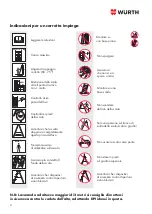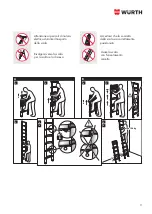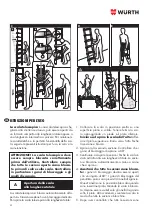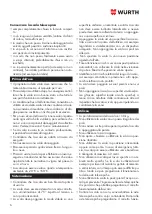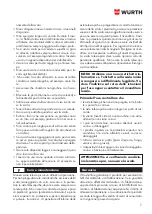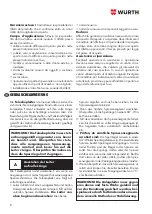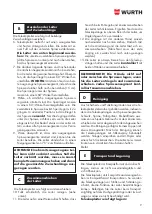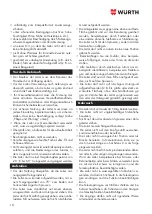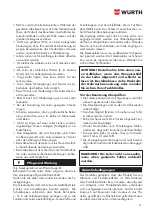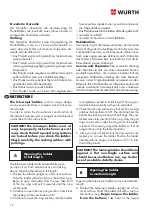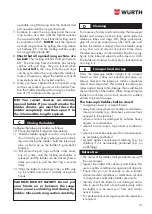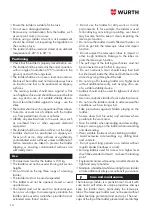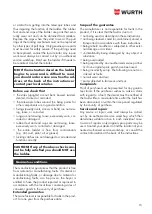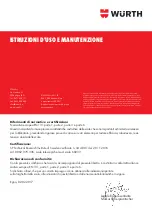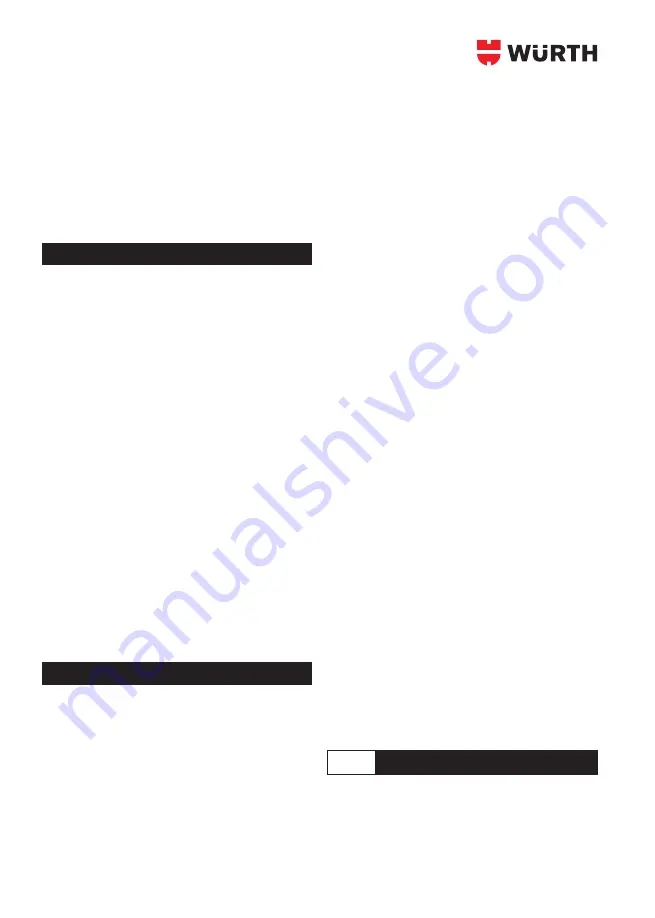
14
• Ensure the ladder is suitable for the task.
• Do not use a damaged ladder.
• Remove any contamination from the ladder, such
as wet paint, mud, oil or snow.
• Before using a ladder at work a risk assessment
should be carried out respecting the legislation in
the country of use.
• The ladder shall be used and stored at an ambient
temperature of -20°C to 60 °C.
• Check that the ladder is properly locked before use.
• The ladder shall be erected at the correct position,
with an angle of inclination of 75º in relation to the
ground, and with the rungs level.
• The ladder shall be on an even, level and unmova-
ble base. The ladder must not lean sideways, have
no load on one foot or be positioned on slippery
surfaces.
• The leaning ladder should lean against a flat
non-fragile surface and should be secured before
use, e.g. tied or use of a suitable stability device.
Do not lean the ladder against its rungs – use the
stiles.
• The ladder shall never be repositioned from above.
• Take into account risk of collision with the ladder
e.g. from pedestrians, doors or vehicles.
• Identify any electrical risks in the work area, such
as overhead lines or other exposed electrical
equipment.
• The ladder shall be stood on its feet, not the rungs.
• Ladders shall not be positioned on slippery sur-
faces (such as ice, shiny surfaces or significantly
contaminated solid surfaces) unless additional ef-
fective measures are taken to prevent the ladder
slipping or ensuring contaminated surfaces are
sufficiently clean.
Use
• The maximum load for the ladder is 150 kg.
• The ladder must not be used with irregular section
heights.
• Do not stand on the top three rungs of a leaning
ladder.
• The ladder must not be used suspended.
• The ladder must not be opened, closed or used
upside down.
• The ladder must not be used in a horizontal posi-
tion or as a bridge. In an emergency situation the
ladder can be used as a stretcher, provided it is not
extended more than 2 metres.
• Do not use the ladder for dirty work or in dirty
environments. If, for example, the ladder is used
for bricklaying, concreting or painting, over time it
may become hard to keep it clean, impairing the
telescopic function.
• Do not use the ladder in wells filled with water, as
dirt can get into the telescopic tubes and impair
function.
• Do not subject the telescopic tubes to impact or
other rough treatment. Damage to the tubes im-
pairs the telescopic function.
• The pull rings of the locking mechanism must not
be connected to each other in any way.
• Do not overreach. User should keep their belt
buckle (navel) inside the stiles and both feet on the
same step/rung throughout the task.
• Do not step off a leaning ladder at a higher level
without additional security, such as tying off or use
of a suitable stability device.
• Ladders should only be used for light work of short
duration.
• Use non-conductive ladders for live electrical work.
• Do not use the ladder outside in adverse weather
conditions, such as strong wind.
• Take precautions against children playing on the
ladder.
• Secure doors (not fire exits) and windows where
possible in the work area.
• Face the ladder when ascending and descending.
• Keep a secure grip on the ladder when ascending
and descending.
• Wear suitable footwear when climbing a ladder.
• Avoid excessive side loadings e.g. drilling brick
and concrete.
• Do not spend long periods on a ladder without
regular breaks (tiredness is a risk).
• Leaning ladders used for access to a higher level
should be extended at least 1 m above the landing
point.
• Equipment carried while using a ladder should be
light and easy to handle.
• Maintain a handhold whilst working from a ladder
or take additional safety precautions if you cannot.
The telescopic ladder is a precision tool. Treat it with
care and it will retain its unique properties. Always
keep the ladder clean, particularly the telescopic
tubes. The telescopic ladder must not be used without
rubber feet (slip protection) and end caps. The end
caps at the top of the ladder prevent dust, metal chips
Positioning
Use
Care and maintenance
F


